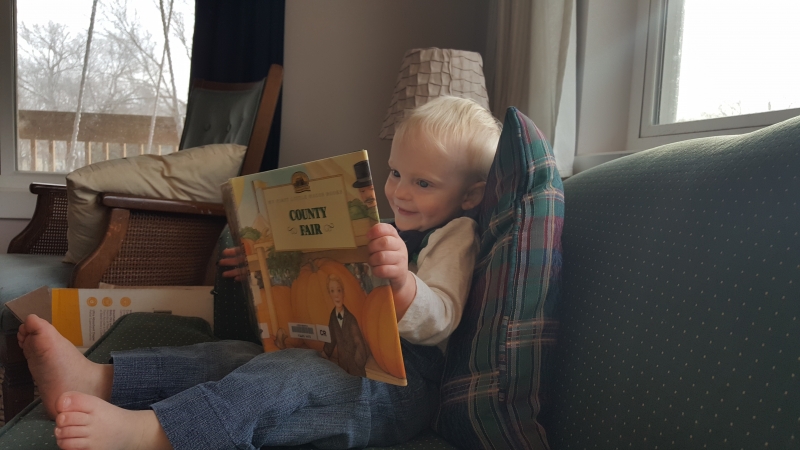There’s a baby giraffe and a baby hippo on the side patio, which makes today the perfect day for Louis to finally be strong enough to open the patio door. I shut it tight and hold it while trying to decide whether I should call the zoo or animal control. Who does one call when exotic animals are loose?
Tirzah Mae flicks on the overhead light, awakening me from my dilemma. I fear she’s also awakened Beth-Ellen – but Beth-Ellen’s belly is still full from her dawn feeding a half-hour prior, so she settles back down in her bassinet after a few kicks to make sure mama’s fully awake.
I get out of bed to turn off the light – and lead the naked Tirzah Mae to the laundry room for some clean panties. “There aren’t any panties in my drawer,” she gave as an explanation for turning on my light. “And the music is off.” Technically, the “music off” rule is for rest time – she’s supposed to stay in bed in the morning until the sun comes up. But morning comes earlier to her east-facing bedroom than to my north-facing one, and I see that she hasn’t broken the “sun-comes-up” rule.
Louis lets out a single pitiful “help” and I get him out of his crib. He and I head back to my bed, where Tirzah Mae joins us as soon as she is dressed. Why do I persist in getting back to bed once they’re up, I wonder. It’s not like I’m going to get any more sleep.
While I’m fumbling with the key to get out my medicine, they’re arguing over who gets to be next to mama.
By the time I’m done taking my medicine, Louis has moved on to repairing the headboard with his “impact driver” (a small water gun). Unfortunately, the repairs that need to be done are directly over Tirzah Mae’s head, which is currently nestled in my right armpit – and under Louis’s foot.
I start to intervene with the usual “don’t step on your sister” rule when the impact driver drops below the bed.
“Saved!” I think, as Louis moves to the side to find something else to do with his relentless energy. But then Tirzah Mae begins to cry. She really wanted the impact driver herself and now it’s gone.
Five minutes later, I’m putting a mallet in time out because it was being naughty and hitting someone’s head.
I give up on trying to take my blood pressure and get out of bed instead.
Louis had not yet started trying to open the little plastic packages mama keeps in her bedside table. We were ahead for the morning – best to get out of bed and keep it that way.


